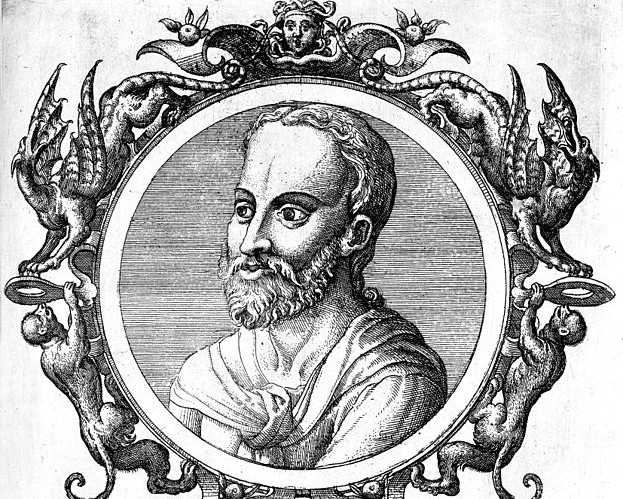Because of the obvious visibility of breast cancer, it was the most described type of cancer in ancient documents, with the Ancient Greeks and the later Byzantine Greeks adding their contribution to the study and treatment of breast cancer.
As autopsies were rare, cancers of the internal organs were essentially invisible to ancient medicine.
None-the-less, breast cancer can be felt through the skin, and in its advanced state often developed into fungating lesions: the tumor would become necrotic (die from the inside, causing the tumor to appear to break up) and ulcerate through the skin, weeping fetid, dark fluid.
The origin of the word cancer is credited to the Greek physician Hippocrates (460-370 BC), who is considered the “Father of Medicine.” Hippocrates used the terms carcinos and carcinoma to describe non-ulcer forming and ulcer-forming tumors.

Celsus (30 BC - 50 AD) was a Roman physician and philosopher who defined the term cancer precisely in his writings and mentions the swelling of the lymph nodes in the armpit in the case of breast cancer. He refers to the surgical treatment of the disease and recommends not removing the pectoralis major muscle (the large muscle of the anterior chest wall) during surgery.
However before him was Archigenes (54-117 BC), an ancient Greco-Syrian physician who gave a very clear description of breast cancer, which was used until the 18th century.
Among other things, he was known for operating on breast and uterine cancer and utilising ligatures for limb amputations.
According to research published in the Child's Nervous System medical journal, Archigenes widened the conditions under which limb amputation would be a safe and successful procedure through new techniques such as first bandaging the limb to expel the blood before a tourniquet was applied above the line of severance.
After these changes, the procedure’s use was expanded to include ulcers and deformities.
Apart from his medical practice, Archigenes also managed to write several significant expositions on a variety of topics such as types of pulses, palpitations, types of fevers and the anatomy of the kidneys, testicles, breasts, and hepatic circulation.
He provided advice on medicines derived from herbs such as white hellebore and diagnostic reasoning to differentiate illness based on the kind of pain experienced by the patient. Archigenes also used opium to treat the symptoms of dysentery and described abscesses of the liver and the associated symptoms.
Galen (121-223 BC) describes surgery for breast cancer. He uses the scalpel for resection, presses the wound to stop the bleeding, then cauterises it for the same reason and, as he says, has good results. In general, Galen does not see the possibility of a cure through surgery, as he believed that cancer is a disease of the mind (internal dysfunction).

He used the word oncos (Greek for swelling) to describe tumors. Although the crab analogy of Hippocrates and Celsus is still used to describe malignant tumors, Galen’s term is now used as a part of the name for cancer specialists – oncologists.
Mastectomy for breast cancer was performed at least as early as AD 548, when it was proposed by the Byzantine court physician Aetius of Amida (502-575 AD) to Theodora.

In effect, breast cancer was well studied by the physicians of Ancient Greece and Byzantium.
Some historians even claim that breast cancer was the model for the study of malignancies, both because of its frequency and its position in the body. The comparison of the disease with animal cancer has its most accurate representation in the case of the breast.
Surgical treatment was easy to apply because the disease was visible, there was no danger to life, there was no high risk of bleeding and the cure was more easily accomplished with fewer complications.
The excision of the tumor had to be done in healthy tissue and the cauterisation applied afterwards had a double task, on the one hand to stop the bleeding, on the other hand to burn any remnants of the tumor.
READ MORE: Did you know many English words have Greek roots?


